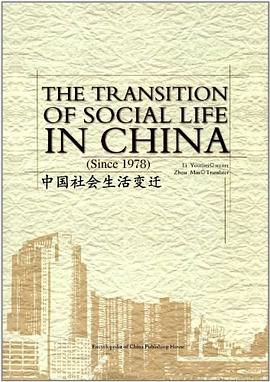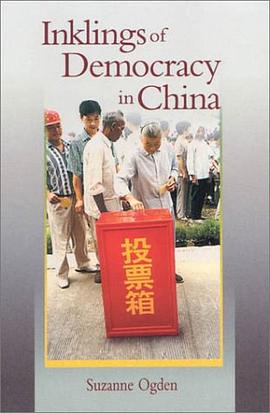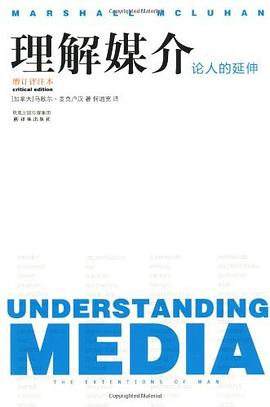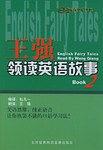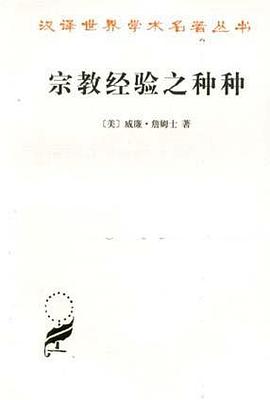Introduction China's Social Life Changes from the Perspective of Institution and Life
Chapter One The Dialectical Relationship between Institution and Life
Section One The Research Perspective
Section Two Institution Construction Aiming at Disciplining Life
Section Three Institution Cannot Quite Arrange Life
Section Four Constructing a Beneficial Interaction between Institution and Life
Chapter Two Analyzing Autonomy with Social Theory
Section One The Multiple References of Autonomy
Section Two The Condition ofAutonomy
Section Three The Paradox of Autonomy
Chapter Three The Return and Restrictions of Autonomy
Section One Manifestation of Autonomy
Section Two The Paradox of Autonomy
Section Three Surpassing the Dilemma: Proposal of the Philosophy of Harmonious Society
Chapter Four The Structure of the Book
Part One Organizing the Society:The State Arrangement for the Structure of Life
Chapter One New Institution, New Society, and New Identification
Section One The Blueprint of Social Reconstruction after the Revolution
Section Two The Finalization of Institution and Generation of New Orders
Section Three Structure and Identity of the Totality Society
Chapter Two Disciplined Social Life
Section One Livelihood within the Logic of Redistribution:Socialist Welfare System
Section Two Equality and Inequality: Different Representations of Economical-Political-Social Status
Section Three "Movement" Becoming a Part of Life
Section Four Homogenization: The Declination oflndividuality
Section Five An Ascetic Way of Consumption and Life
Chapter Three The Secret Space of Autonomy
Section One The Behavioral Strategy of "People of the Working Units" : Hidden Movement of the Informal Network of Relationship
Section Two The Beehive like Structure: Space among the Work Units
Section Three Change of Identities: The Hidden Class Movement
Summary
Part Two The Loosening of "Certainty" : Experimental Reforms
Chapter One Opening up the Gap of "Society of Work Units"
Section One Doing All That Has Been Left Undone
Section Two "Loosening" and "Allowing" : Prelude of System of "Loosening"
Section Three The Overflowing of Free Floating Resources
Chapter Two Minor Adjustment of Class Relationship
Section One Transformation of the Pattern of Migration
Section Two The Turning Point of the Value of Knowledge: Rising of the Social Status of the Intellectuals
Section Three The Rise of the Standard of Career and Wealth: The Miniature of New Social Groups
Chapter Three Fanuly Life out of the Shadow of Politics
Section One Diversification of Family Economy: Reform of Relationship in Rural Families
Section Two Out of the Political Shadow: Reforms of Relationship in Urban Families
Chapter Four Revival of Freedom and Individuality
Section One Free Reading: New Enlightenment Movement
Section Two Between Ideal and Reality: Highlighting of Reflective Consciousness
Section Three Individuality out of Imitation: Fashion Life Far from Politics
Summary
Part Three The Weakening of Re-distribution System: Generation of Autonomy
Chapter One Radical Changes in Institution
Section One The End of Ticket Era: Farewell to the Economy of Shortage
Section Two Weakening of the System of Population Registration and Organization
Section Three System of Labor Contract: Breaking the " Iron Rice Bowl"
Section Four The Return of Community: Self Arrangement of Social Life
Chapter Two The Growth of a New Class
Section One Manual Workers Eaming More than Mental Workers: Loss of the Intellectual Group
Section Two Rise of the New Rich: Wave of Plunging into the Business Sea
Section Three Formation of a New Industrial Worker: Double Identities of Migrant Workers
Section Four White-Collars: Demonstrating a Life of Value and Taste
Chapter Three Coming of the Consumption Era
Section One Improvement of the Level of Consumption:Transformation from Quantity to Quality
Section Two Entertainment Consumption: Privatization and Industrialization
Section Three Luxurious Consumption: Fashion and Social Etiquette
Chapter Four New Trends in Families and Marriages
Section One Demonstration of the Space for the Self
Section Two The Trans-national Marriage:A Springboard
Section Three Facing the Loosened Marriage: "Forgiving" Extra-marital Affairs
Chapter Five Self Consciousness and Cultural Aphasia
Section One "Humanism": Appeal of Humanity
Section Two Realization of Self Value: The Fourth Generation
Section Three Cultural Aphasia: Mass Culture and Humanism
Summary
Part Four Opening and Mobility:Social Life in the Context of Market
Chapter One Further Release of the Power of the Market
Section One Inhibiting the "Overheated Economy"
Section Two Encountering "Insufficient Domestic Demand"
Section Three Entering the Global Trade System
Section Four "Marketization" of Social Life
Chapter Two Stratification of Classes: New Characteristics of the Social Structure
Section One Re-structuring the Society
Section Two The Burgeoning of New Stratum Consciousness
Section Three The White Collar Group: Stabilizers or
Chapter Three Further Generation of Autonomy: Power Consciousness and Social Engagement
Section One "New CeUs" in the Rising Society: Non-governmental Organizations
Section Two Awakening of Power Consciousness and Beginning of CiviIMovements
Chapter Four Shaping of the Era of Consumerism
Section One Farewell to Shortage: Drastic Changes in the Structure of Family Expenditure and Receipts
Section Two Excessive Consumption: Credit Changes Life
Section Three Differentiation and Diversification: Consumption Shaping Stratification
Chapter Five Way of Life in the Age of the Internet: Life in Virtuality
Section One Communication and Life in the Age of the Internet
Section Two Expression of Democracy via the Internet
Chapter Six Reform of Welfare System: Transforma- tion from the Release of the Market to Protection of the Society
Section One Marketization of Social Welfare System and Its Social Consequences
Section Two Reflections After the 16th National Congress of the CPC and Readjustment of Social Welfare System
Chapter Seven Loss of Identity and Effort at Identity Reconstruction
Section One Structural Changes in the Foundational Area of SocialIdentity
Section Two Way of Renovation to Reconstruct Identity
Summary
Part Five Harmony: The New Page in Social Construction
Chapter One Harmonious Society and New Consensus of Reform
Section One Intrinsic Logic of the Change of Consensus of Reform
Section Two Harmonious Society: New Consensus of Reform
Section Three Reform Consensus Renovated: Reconstruction
of Identity Value
Chapter Two Institutional Arrangements in the Construction of a Harmonious Society
Section One Constructing the Network of Social Security:Institutional Foundation of Harmonious Society
Section Two Adjusting the Mechanism of Social Interests:Relationship Mediation of Social Construction
Section Three Burgeoning of the Pattern of SocialGovernance: The Interior Process of Harmonious Society
Chapter Three Beginning of a Diversified and Harmonious Life
Section One Between Reality and Virtuality: Social Foundation of Diversified Life
Section Two Choice among Stratification: Autonomous Life
Section Three Building Harmonious New Life: Conformity of Value and Reconstruction of Order
Summar
Epilogue Reconstruction of the Autonomy of Nation State in the Context of Globalization
Chapter One New Issuess Raised by Globalization
Chapter Two Nation States in a Complicated Society
Chapter Three Nation States: Active Agents in the Context of Globalization
· · · · · · (
收起)
